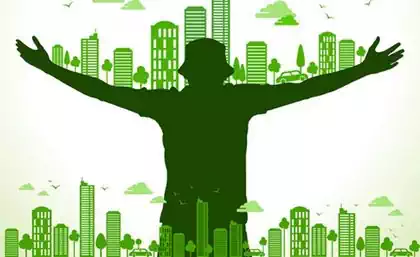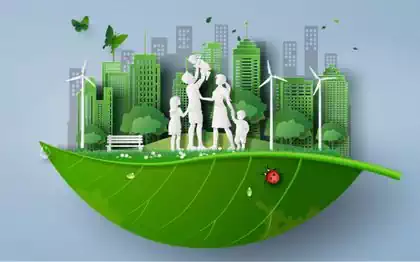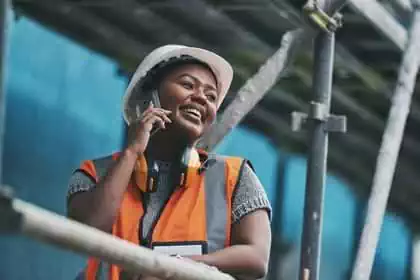Sustainable architecture in Zimbabwe
Green buildings are a vital cog in achieving a sustainable development and leaving a future for our children. As architects, we recognize that sustainable design plays a crucial role in addressing the climate crisis. By minimizing energy and water consumption, green buildings demonstrate how thoughtful design can harmonize environmental responsibility with urban growth. Yet, to truly embed these principles into the fabric of our cities, supportive legislation and regulatory frameworks are essential to guide and uphold sustainable development standards.


Why Zimbabwe Needs Laws for Sustainable architecture
1. Climate change, energy crisis, and environmental pressures Zimbabwe, like many countries, faces increasing environmental challenges: erratic rainfall, rising temperatures, frequent droughts, pressures on water supply, power shortages, load-shedding, etc. Buildings are major consumers of energy and water, and contribute to greenhouse gas emissions. Without legal requirements, many buildings will continue to be inefficient (poor insulation, wasteful materials, non-optimal orientation, inefficient lighting/heating/ventilation). Laws can set minimum standards to ensure that new buildings perform much better, reducing national energy demand, cutting carbon emissions, and easing environmental stresses.
2. Economic benefits and long-term savings Energy and water efficiency reduce operating costs. Over the life of a building, savings on utility bills, maintenance, and possibly cooling/heating can be substantial. For occupants and owners, this improves affordability. For the state, reduced demand on national grid, less need for generating capacity, and fewer subsidies might be needed. Clear laws can also attract investment: developers and financiers prefer certainty and predictability that comes from legal standards and enforcement.
3. Health, comfort, and resilience Buildings designed for good ventilation, indoor air quality, thermal comfort, resilient materials (able to endure extreme weather, floods, heat) improve the health and quality of life of occupants. Additionally, resilient design helps communities better withstand climate related risks (storms, floods, heat waves). Laws can require such features (e.g. minimum ventilation, building in flood zones, choice of materials, design orientation) to be incorporated.
4. Equity and inclusion Without legal requirements, only high-end or luxury buildings tend to adopt green features. Formal laws ensure that sustainable building practices are not only for the wealthy but are required for mainstream housing, public buildings, schools, clinics. This helps reduce disparities, and ensures vulnerable communities are not disproportionately burdened by high utility bills or poor environmental quality.
5. Meeting national/international commitments Zimbabwe has made various commitments (e.g. under UN climate agreements). Laws for green buildings help the country to meet its obligations for emissions reductions or energy efficiency. Also, the government is developing an Energy Efficiency Act, a National Energy Efficiency Strategy and Action Plan. Similarly, green building standards are being planned.


Existing Moves in Zimbabwe
Green architecture is designed to improve quality of life while minimising its environmental footprint. In Zimbabwe, this often means: Zimbabwe’s National Energy Efficiency Policy has been approved, aiming to promote programs across residential, commercial, industrial, agricultural and transport sectors. The Cabinet has advised that Zimbabwe shall develop an Energy Efficiency Act and appropriate regulations. The Ministry of National Housing and Social Amenities is working to develop green building standards/model codes, with technical assistance from the Climate Technology Centre and Network (CTCN). Partnerships are underway: e.g. Green Buildings Council of Zimbabwe (GBCZ) with UN-Habitat and Swedish International Development Cooperation Agency (SIDA) for a four-year programme to build capacity and set certification standards tailored to Zimbabwe’s climate. Some new sustainable buildings are appearing as examples of sustainable design.
Challenges to Overcome
To develop and enforce laws effectively, Zimbabwe will need to manage several challenges:
• Institutional capacity: Ministries, local authorities, building control authorities need technical staff, inspectors, auditors who understand sustainable design and energy efficiency.
• Financial constraints: Green materials, better insulation, renewable energy systems often cost more up front. Incentives, subsidies or financing mechanisms may be needed.
• Awareness: Developers, architects, engineers, construction firms, even the general public may not fully appreciate or know how to apply sustainable practices.
• Enforcement and monitoring: Laws are only meaningful if there are inspections, penalties, monitoring, and feedback loops. Without enforcement, minimum standards might be flouted.
• Cost-versus-benefit perceptions: There may be resistance to more stringent standards if they are seen as increasing costs or making approvals slower.


Address
2.99 Hobourne Hill
Borrowdale
Harare, Zimbabwe
Contacts
Email: info@panarch.info
Phone: +263 (24) 2870 232
